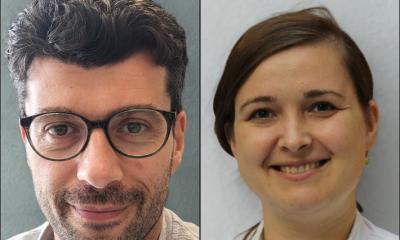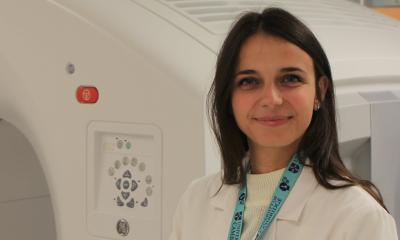News • Updated diagnostic criteria
Parkinson's: New three-type classification
An international team of researchers, including Prof. Christine Klein from the University of Lübeck and the University Medical Center Schleswig-Holstein, Campus Lübeck, has made a significant leap in Parkinson's disease research.

Image source: University of Lübeck; photo: Christoph Westenberger
In a recent publication in Lancet Neurology, the team introduces a novel, biologically based classification system for Parkinson's disease (PD), known as SynNeurGe (S-N-G system), a crucial step towards understanding and treating this complex and increasingly prevalent neurodegenerative disease.
Current clinical classifications of PD have been limited in reflecting the intricate disease mechanisms and biological diversity of the disease. PD affects approximately 147,000 individuals in Germany alone and is characterized by chronic and progressive manifestations. Although symptomatic treatments, including medication and deep brain stimulation, have shown effectiveness, a curative or causal therapy remains elusive.
PD and related synucleinopathies are marked by pathological deposits of misfolded α-synuclein protein in the brain, leading to the formation of Lewy bodies and the subsequent destruction of dopamine-producing neurons. This results in the hallmark motor symptoms of PD. Genetic mutations and risk variants contribute to the disease, with sporadic and genetic forms sharing basic pathomechanisms. However, forms of Parkinson's without Lewy bodies have also been identified.
The SynNeurGe classification, a milestone in PD research, considers three key components:
- Parkinson's-type synucleinopathy (S), that reflects the presence or absence of pathological α-synuclein in tissues or cerebrospinal fluid.
- Parkinson's-associated neurodegeneration (N), that includes specific neuroimaging techniques.
- Parkinson's-specific genetic variants (G) that describe pathogenic gene variants causing or predisposing to PD.
Additionally, a clinical syndrome component (C) is integrated, defined by specific or multiple features, such as motor, sensory or autonomic features. This biological S-N-G classification offers a detailed framework for understanding PD, allowing for precise identification and therapeutic targeting of molecular bases of the disease.
This shift from a purely clinical diagnosis to a biological classification is of essential importance for the next phase of basic and clinical research, bringing the field closer to precision medicine. The SynNeurGe system is the foundation for future biomarker-based subgrouping and staging systems. This approach is critical for developing disease-modifying therapies, as it allows for accurate stratification of study cohorts, ensuring that new drugs target appropriate molecular mechanisms.
The introduction of the SynNeurGe criteria, to which Prof. Klein lent her expertise particularly in neurogenetics, represents a forward-looking advancement in classifying PD. It sets the stage for more targeted and effective therapeutic strategies, moving beyond symptomatic treatment to addressing the molecular causes of PD that will be a glimmer of hope for those affected by PD.
Source: University of Lübeck
25.01.2024











